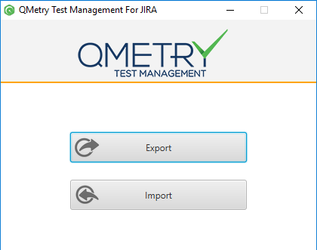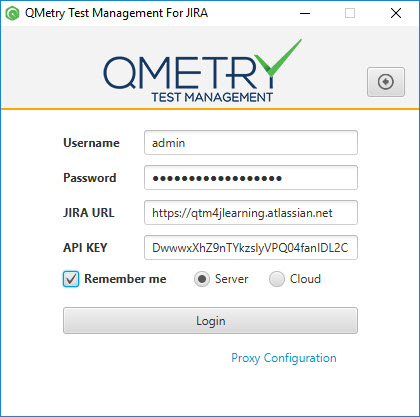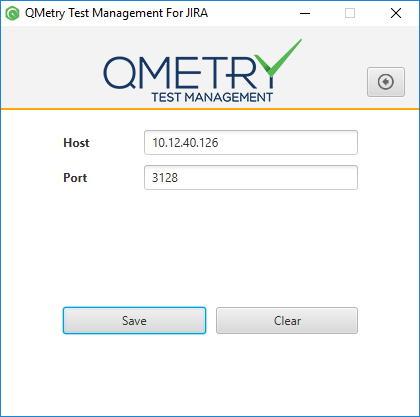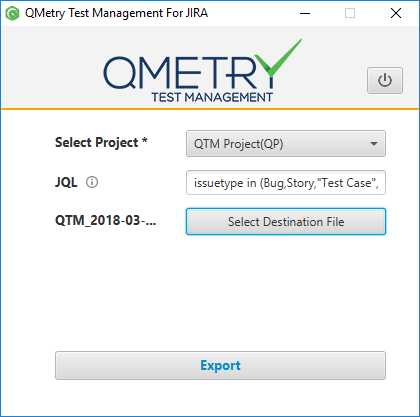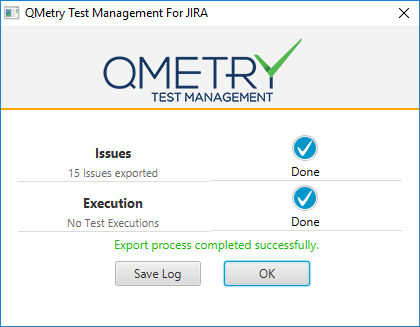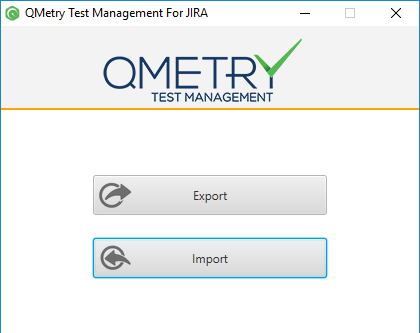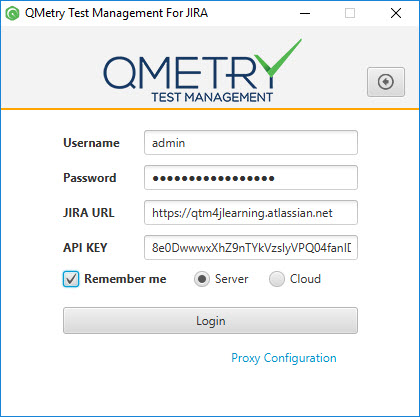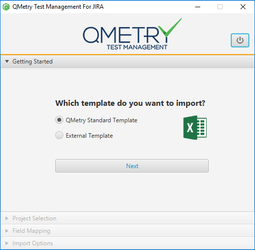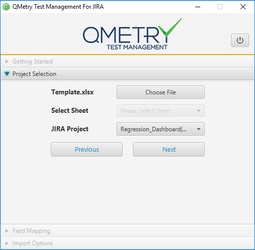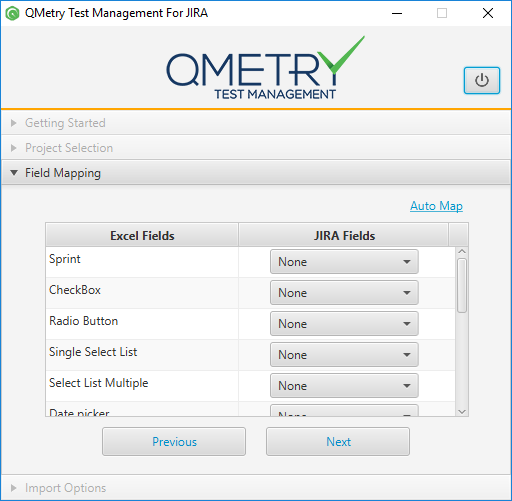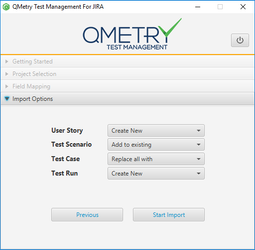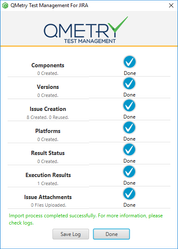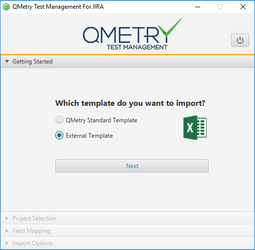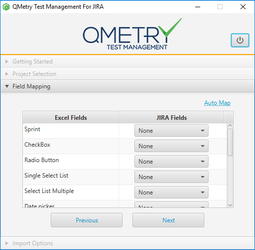Back to QMetry All Products Help Page
How to Use the Tool
Exporting Data
To export the data, click the Export button.
The next screen is login screen.
- Username: This is the Username displayed in of your JIRA Profile. It is different from the Email in JIRA.
- Password: Enter Password for the JIRA instance.
- JIRA URL: The URL of JIRA instance from where you want to export the data.
- API KEY: This API Key is generated from the JIRA instance you want to conduct the export from. The API key is copied from QMetry > Configuration > Import/Export Tool > Authentication.
- Select Server version.
Proxy Configuration
Configure Proxy settings by entering Host and Port.
Click Save.
It will navigate you back to the Login screen. Click on the Login button.
The next screen opens.
If you are exporting, then enter the following fields:
- Select Project: The drop-down menu has list of projects on it. Select the Project the data of which is to be exported.
- JQL: Write the JQL to select the entity you want to export the data of: Test Run, Story, Test Scenario, Test Case. If the field is kept blank, then all the issues of the Project will be exported.
- Select Destination File: Click the button and locate the destination path to store the file that is being exported. The Save As dialogue opens. Also mention the File Name to save the Excel file with.
Click the Export button to initiate the export process.
The next screen opens displaying the progress of export in terms of:
- Issues: The percentage of issue data got exported.
- Execution: The percentage of test run execution exported.
Save Log: In case of errors, the relevant message is displayed on the screen. The Export process is still carried out. User can click on the Save Log button to save the logs and view it later for the list of errors.
Importing Data
Open the stand alone application.
The main page has two buttons on it: Export and Import.
Click the Import button to import the Excel file that was exported.
The next screen is login screen.
- Username: This is the Username displayed in of your JIRA Profile. It is different from the Email in JIRA.
- Password: Enter Password for the JIRA instance.
- JIRA URL: The URL of JIRA instance to which you want to import the data.
- API KEY: This API Key is generated from the JIRA instance you want to conduct the import to. The API key is copied from QMetry > Configuration > Import/Export Tool > Authentication.
- Select Server version.
Proxy Configuration
Configure Proxy settings by entering Host and Port.
Then click Save.
It will navigate you back to the Login screen. Click on the Login button.
The next screen opens.
Select either of the file format you want to import.
QMetry Standard Template
External Template
Back to QMetry All Products Help Page
